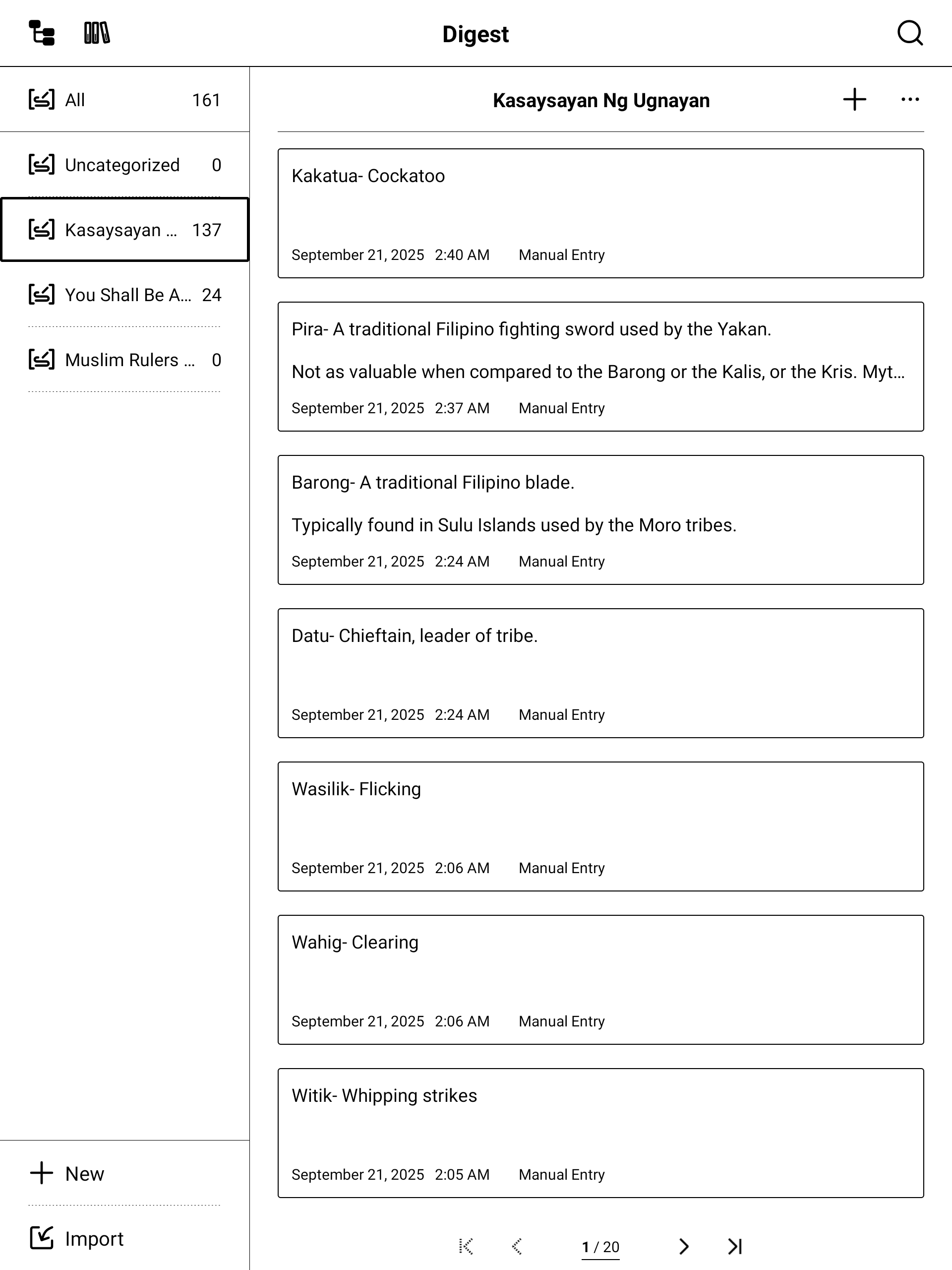Research Mode: Building the Raw Archive
In my five-step workflow, everything begins with Research Mode. This is the foundation of the entire cycle — the place where I gather the raw material that will later be refined, connected, and transformed into meaningful outputs. Without Research Mode, the rest of the process has nothing to stand on.
The Role of Research
Research Mode is about capturing, not interpreting. It’s where I collect the fragments of information that spark ideas or support future writing:
Quotes from physical books, typed in via Bluetooth keyboard or highlighted directly from PDFs.
Clippings from Kindle or online sources, pasted into the Digest App through the Partner App.
References like page numbers, bibliographic notes, and contextual details.
Scanned Text from the Partner App’s OCR tool — not always perfect, but useful for gathering material from physical sources.
PDF Digests created directly inside Supernote for passages I want to revisit later.
I think of Digest as my raw archive — a collection tray where everything lands first, unpolished and unorganized. The goal is to capture without judgment so that nothing is lost.
Why Research Mode Matters in the Cycle
If I try to reflect or write while still gathering, I split my attention and lose momentum. By separating Research Mode from later steps, I give myself permission to focus only on collection.
Research Mode feeds the fragments into Digest.
Synthesis Mode will later interpret them in notebooks.
Writing Mode will weave them into narrative.
Exporting Mode will move the writing outward.
Archiving Mode will bring the finished work back home.
Research Mode matters because it starts the chain. Every post I’ve written begins here, with scattered pieces stored safely in Digest.
My Best Practices in Research Mode
Through trial and error, I’ve developed a few practices that keep this stage clean and effective:
Capture first, filter later – Don’t slow down to decide what’s “important.” Get it into Digest, then decide later.
Always include context – Page numbers, source info, or a quick note about why I captured something. It saves time later.
Use multiple inputs – Books, articles, PDFs, online sources, even scans. Each one strengthens the archive.
Treat Digest as temporary – It’s not the final home; it’s the first stop.
Closing Reflection
Research Mode is the beginning of discovery. It’s not about making sense of everything yet — it’s about giving myself the raw materials to work with later. By separating this step from reflection, writing, and archiving, I keep my workflow focused and sustainable.
Every cycle begins here. Every piece of writing I’ve created starts with fragments gathered in Digest. Research Mode is where the story begins.
Next Up-> Part 2 Synthesis Mode
